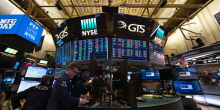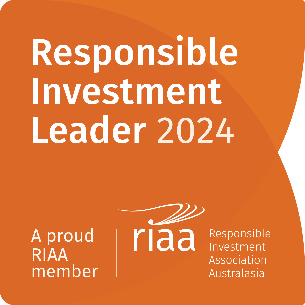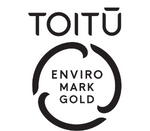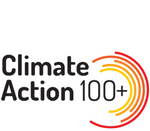The Hunt for Yield

I have recently taken over the portfolio management responsibilities for the Devon Dividend Yield strategy. As Devon’s Chief Investment Officer, I have always closely monitored the investment opportunities that existed in this space, but during the past month I have enjoyed the challenges that exist in building a portfolio of stocks which offers our investors a superior and sustainable income stream.
Financial markets around the world are at a fascinating juncture. As governments and businesses navigate the challenges of surviving COVID-19, stock markets have recovered strongly. Interestingly, at this point, “growth” stocks have substantially outperformed both “value” and “high dividend” stocks. Usually during a market correction value (cheaper) stocks and defensive high yielding stocks will perform better than low dividend but higher growth stocks (which tend to be more expensive). This cycle, so far, has been entirely different with large growth company stock prices materially outperforming. The reasons for this are less clear but may have something to do with the amount of retail interest in shares (where investors tend to buy good investment stories rather than worrying about valuations) and also passive index buying which favours larger companies.
The apparent disconnect between the difficulties being experienced in the “real world” and the buoyant share markets have confounded many commentators, but key to this circumstance has been the introduction of extraordinarily supportive monetary policy. Central banks have flooded the world with liquidity and interest rates have been slashed. This has underwritten the functioning of the financial system, but it has similarly created significant challenges for those investors seeking income.
Probably the most important reference for, and influence on, interest rates globally is the pricing of US 10-year Treasuries. In early 2000, these bonds were trading with a yield of 6% and by late 2018 they were still offering investors more than 3%. Recently though this rate has collapsed to almost 0.5%. There are a range of factors which have influenced this outcome, but it appears almost certain that over the next 12-months, the potential for any major move upwards in the yield curve (and therefore interest rates) is low. Central banks are also buying record quantities of bonds to ensure that interest rates stay low. Consumer spending has fallen dramatically along with an unprecedented lift in unemployment levels. These macro outcomes, together with soaring private sector savings, have resulted in the world economy operating at a substantial discount to its capacity. This output gap will take years to close, and therefore the potential for any inflationary risks have notably diminished.
That is not to say that global growth will not eventually improve from here. It will. But the trajectory of this recovery is extremely uncertain. COVID-19 has been a transitory shock to the world which is different to the longer-term effects that we observed through the GFC. This reality, and because of the various policy initiatives which have been implemented, gives us confidence that activity levels will improve. We are already seeing evidence of this across many of the companies that we research in Australasia. The commitment of organizations such as the US Federal Reserve are also critical at this stage of the cycle. Fed Chairman, Jerome Powell, recently commented that “we’re not even thinking about thinking about raising rates” until 2022. Having moved to a hawkish position prematurely back in 2013, which resulted in stock market convulsions, the US central bank will absolutely err on the side of caution this time. Low interest rates and elevated liquidity will be their mantra for the foreseeable future.
This backdrop presents challenges for those investing in investment grade fixed interest in the pursuit of income. The interest rates being offered by the major local banks on term deposits are insufficient as are the yields on better-quality corporate bonds. Recently the RBNZ Governor, Adrian Orr, echoed these sentiments by suggesting that bank depositors should consider other investments due to the likelihood of extremely low interest rates being maintained in New Zealand for the foreseeable future. Adrian Orr has even identified the possibility of the overnight cash rate being set at a negative level in the future! This is why high-yielding shares, many of which have not participated fully in the share market rally, are increasingly topical. In an environment where there is $190bn in retail bank deposits and where recent estimates of direct local equity ownership sit at just $20bn, even a small re-allocation of capital back into stocks could have a meaningful impact. This thematic is likely to be a positive one but within this environment a high degree of caution and discipline is still required.
These have been unprecedented times with worldwide business closures creating distress for many, testing even the most robust balance sheets. The effects have been profound across all sectors with even the ANZ Bank recently deferring their interim dividend. In New Zealand, which historically has been a dividend paying market, both pay-out ratios and gross yields have slumped to historic lows. Interestingly the New Zealand market now returns less from a cash yield perspective than Australia (3.0% vs 3.2%).
As COVID-19 has hit, 27 listed New Zealand companies have cancelled, deferred or reduced their dividends. Additionally, another six listed companies have raised capital to bolster their balance sheets with the prospect of more to come as stock prices return to more normalised levels. The capital raisings have all been well sought after with most stocks appreciating significantly post issue. In most cases the equity raisings had less to do with immediate business liquidity and more to do with covenant breaches imposed by bond holders, the most intractable being US Private Placement debt holders.
Whilst the Dividend Yield portfolio has not been immune to dividend deferrals, I am very happy to report that our holdings are heavily biased towards those companies which enjoy strong balance sheets, and many which additionally have significant asset backing. Although many companies have not yet reported any form of earnings or dividend guidance, this portfolio continues to produce a cash yield of 5%. This is notably ahead of its benchmark, and it also has much better risk characteristics. This is a function of diversification and business sustainability. It is worth noting that the equity market benchmark index in New Zealand, the NZX50G index, is comprised of a significant portion of “growth” stocks that pay little to no dividends. The two most obvious examples of this are a2Milk (13% of the NZX50) which pays no dividends and Fisher & Paykel Healthcare (17% of the NZX50) which has a yield of only 1%. Both these stocks have made considerable contributions to the overall index performance, having significantly outperformed the NZX50 Index year-to-date, but they are not companies that we can invest into given our aim is to produce a sustainable yield that is consistently above the mean. Interestingly the NZX50 now has 47.5% of its index weighting paying less than 1% for the next 12 months, as opposed to the ASX200 comprising 20%.
Subsequent to taking the reins of this portfolio I have introduced a number of changes to our holdings. A good example of this has been increasing our exposure to Spark New Zealand. This is a high quality and defensive business, which sells services that are not particularly sensitive to economic activity. Its balance sheet is also well positioned with its debt set at a conservative level and as such Spark’s board has been afforded the luxury of maintaining their dividend at an attractive level. After reporting a strong first-half result in April the company also committed to a $0.25 per share dividend, a cash yield of almost 5.5%. This type of investment defines the direction that I am taking with this portfolio and I am excited by the prospects that we are currently identifying.





